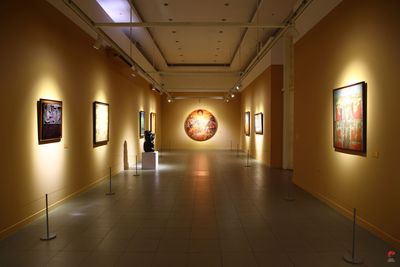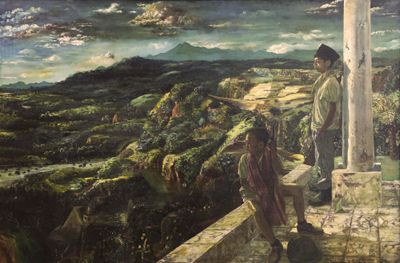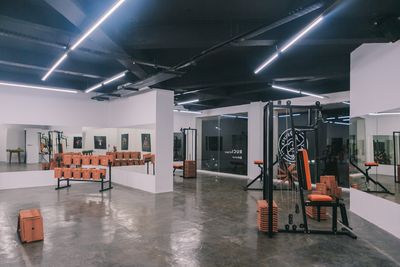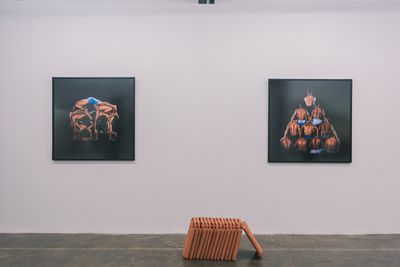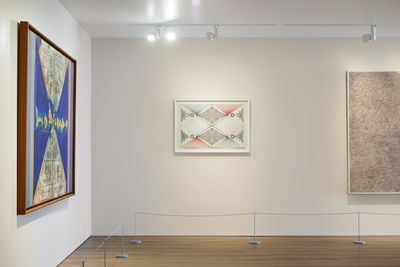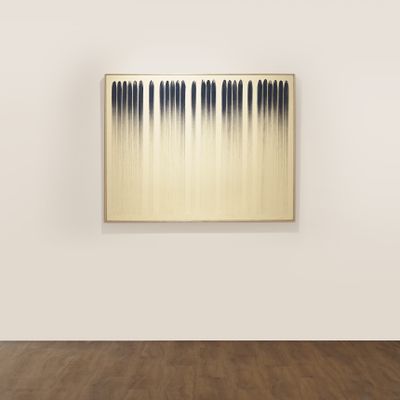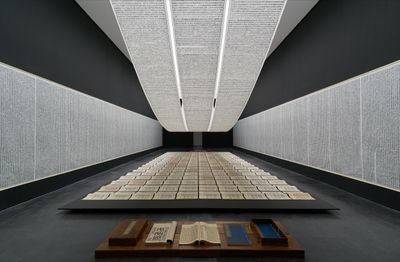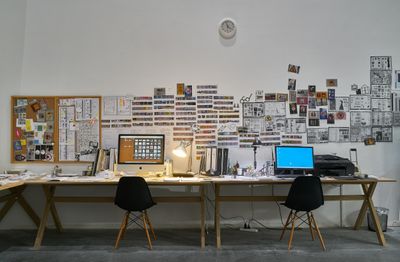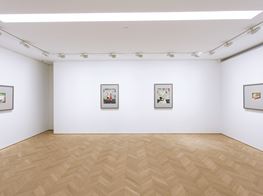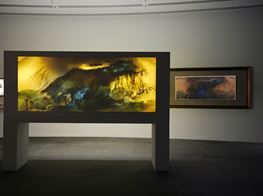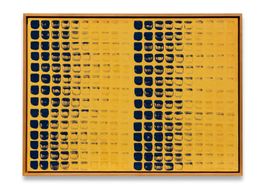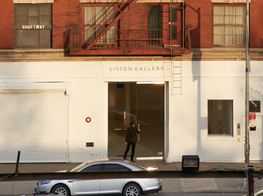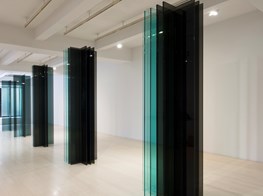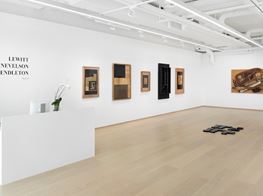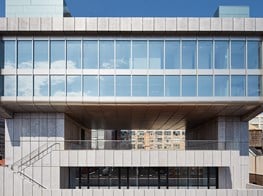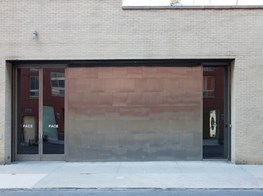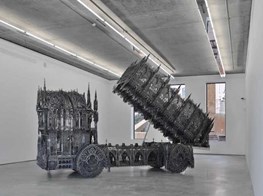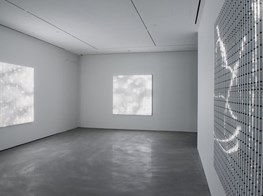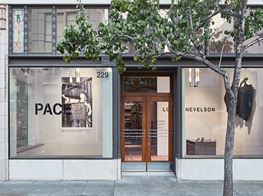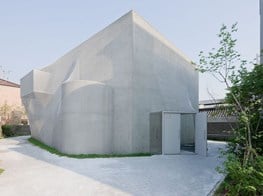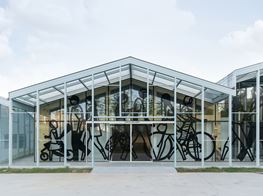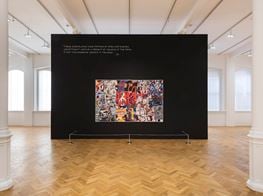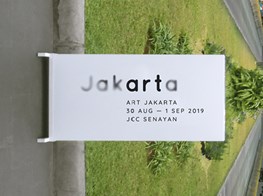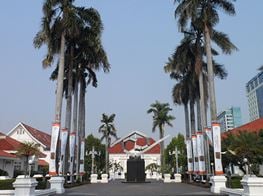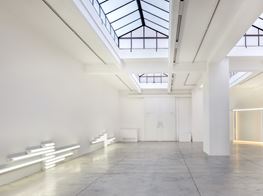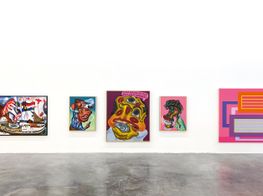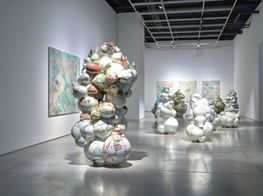Art Jakarta Lowdown: Art Shows to See in 2019

Nontanlab (Agus Novianto), Kokoeru (2019). Audiovisual installation. Exhibition view: Media Art Globale 2019: TransHuman Code, Komunitas Salihara, Jakarta (9 August–1 September 2019). Courtesy Komunitas Salihara.
Between 30 August and 1 September 2019, the 11th edition of Art Jakarta will take place at its new home at the Jakarta Convention Center following its rebranding, with collector Tom Tandio as director, and Enin Supriyanto as artistic director.
At the fair, viewers can encounter large-scale exhibitions as part of the 'Spot' sector, including teamLab's immersive, simulated environment of crashing waves presented by Gajah Gallery (Dark Waves, 2016). Another teamLab installation is on view at Gandaria City (Future Park and Animals of Flowers, Symbiotic Lives, 20 June–20 December 2019): one among many exhibitions—from illustrator Wiratama's solo exhibition Jakarta Bah! at Gardu House (25 August–1 September 2019) to Meliantha Muliawan's playful sculptures at Rubanah Underground Hub (24 August–14 September 2019)—taking place across Jakarta, which has seen a growth in the number of galleries, institutions, and community-run spaces and initiatives over the past few years. Discover more of the city's exhibition highlights in this Ocula Lowdown of shows to see.
Exhibition of the National Art Collection #2: Lini Transisi
National Gallery of Indonesia, Jl. Medan Merdeka Timur. No.14, Gambir, Central Jakarta, 10110
1–31 August 2019
The month of August in Indonesia has always been somewhat dedicated to commemorating the nation's Independence Day that is celebrated every 17 August. It's not unusual to see events and art exhibitions themed around the spirit of independence, in a manner that leans towards nationalism and patriotism. The National Gallery of Indonesia is currently showcasing the second chapter of its Exhibition of the National Art Collection, which aims to give the public access to appreciate, gain knowledge, and learn more about the artworks and the artists that are included in the collection, as well as to ensure the continuity of art creation in a positive light for future Indonesian generations.
The theme of this year's exhibition, titled Lini Transisi, or Transition Line in Bahasa Indonesia, refers to the concept of 'change' or 'switchover'. This concept relates to the transformation of three important matters in the study of Indonesian contemporary art thus far, as defined by art historian M. Agus Burhan. First, the dimension of aesthetic paradigm, as shown in S. Sudjojono's work Aku Cinta Padamu Tanah Airku (1954), which very much sets the tone for Indonesian art during its time as a young nation. Sudjojono himself was one of the founders of Indonesia's first artist association, PERSAGI (Persatuan Ahli-Ahli Gambar Indonesia), who advocated a new modern art that held a distinctly Indonesian identity and highlighted the struggle of the Indonesian people under the Dutch colonial system.
Secondly, the exhibition highlights the socio-cultural contexts that defined the creation and development of art itself, reflected in Soedibio's painting Dewi Sri (1970) that portrays the vibrant imagery of the goddess Sri, the Balinese and Javanese goddess of rice and fertility. Lastly, the exhibition looks at the visualisation of specific events through the artists' imaginative and unique perspectives, as seen in Koeboe Sarawan's painting Menanti (1991). By utilising the artist's own self-actualisation, Sarawan presents his subjects and gloom-ridden scenery with a feeling of suspense, as if they are waiting for something or someone to manifest. Most of his surrealistic paintings have been delivered through fascinating realist technicality.
The exhibition's curatorial captures signs of crucial change in the progression of Indonesian contemporary art, particularly during the different political phases post-independence period. These topics have heavily influenced Indonesia's economy, history, and socio-politics throughout its 74 years of independence, and contributed to shaping Indonesian contemporary art today.
Julian Abraham 'Togar': Ulah Tanah (Mischievous Earth)
RUCI Art Space, Jl. Suryo Blk. S No.49, Kebayoran Baru, South Jakarta, 12180
16 August–15 September 2019
As an artist whose multidisciplinary practice is based on extensive research—combining installation, sound, video, technology, and science—Togar's current exhibition at RUCI Art Space attempts to take the audience to an Indonesian-styled gym, called the Super Baday Fitness Centre. Curated by Grace Samboh and Arief Yudi Rahman, Ulah Tanah (Mischievous Earth) transforms RUCI's exhibition space by setting up gym machines, including a bench press, lat pulldown machine, and pec deck, among others. For Super Baday Fitness Centre, Togar replaces weights, dumbbells, and some other aspects of equipment prevalent in gyms and fitness centres with genteng, a traditional Indonesian roof tile that is commonly made of clay or tanah liat.
Super Baday Fitness Centre seems to extend from Togar and Samboh's previous work Jatiwangi Cup Calendar (2015)—calendars featuring photos of a local roof tile factory workers and participants in the annual bodybuilding competition, Jatiwangi Cup. The competition was instigated by Togar and Samboh, during their year spent living in Jatiwangi, along with the non-profit art organisation Jatiwangi art Factory (JaF), Illa Syukrillah Syarif (Jatiwangi Roof Tile Museum), and owners of the roof tile factory who were interested in supporting the project.
The fluidity of Togar's practice is enabled through a variety of tools that he uses to engage both the audience and their environment. At Ruci Art Space, Togar successfully navigates the language of cross-societal, community-based activities and breaks down the systemic industrial benchmark by involving several fitness and health influencers to take part in work-out sessions in Super Baday Fitness Centre using genteng, for the exhibition preview.
Media Art Globale 2019: TransHuman Code
Komunitas Salihara, Jalan Salihara No.16, Pasar Minggu, South Jakarta, 12180
9 August–1 September 2019
Media Art Globale is an initiative started by Connected Art Platform, involving art practitioners and art communities in Indonesia, Southeast Asia, and Europe, with the aim to situate art practice from within the media art movement. Hosted at Komunitas Salihara and titled TransHuman Code, the inaugural festival involves exhibitions, discussions, symposiums, and workshops on art, technology, and science, and how the three intersect with one another.
Among works by emerging artists and designers, Cynthia Delaney Suwito's installation, Knitting Noodles (2019) has got to be one of the most captivating presentations. The fragility of the noodles and their instant quality contrasts with the meticulousness involved to gently draw them together. In a workshop that took place on 10 August, Suwito used her installation as a starting point to explore the material quality of new media, inviting audience members to knit noodles—an infuriating experience for some, and calming for others, with the workshop asking participants to slow down and watch the unhurried progress of a simple activity. The act bore close resemblance to Jakarta's inhabitants being forced to slow down by creeping traffic, despite the fast pace of daily life.
The inaugural Media Art Globale includes works that epitomise the growth of new media art by artists including Budi Ubrux, Jakob Kudsk Steensen, and Indonesia-based artist collective Hysteria. This is sustained by two symposiums that are held as part of the event to discuss the handling of new media art collections, and to consider the correlation between art, science, technology, and industry. Panellists include the director of Museum MACAN, Aaron Seeto; the director of Komunitas Salihara, Nirwan Dewanto; and collector Wiyu Wahono, among others.
In addition to exhibitions and workshops, TransHuman Code is holding a webinar on 24 August by Rotterdam-based designer Natasha Berting, who presents her postgraduate thesis around the idea of a collective performance on social media. Based on her work Instant Warnet (2019), Berting investigates a network of online harassments where participants are encouraged to disrupt and defuse online toxicity. The work is largely based on warnet or warung internet—internet cafes that sprung up across developing cities in Indonesia in the mid-1990s. These cafes played a big role in the distribution of new information towards the end of the Soeharto's 32 years of authoritarian rule, which involved pervasive media censorship. Much like the warnet that helped to interfere with an established authoritarian system, Berting's Instant Warnet intends to obstruct a culture of social media hostility.
Museum MACAN Collection Display
Museum MACAN, AKR Tower, Level M, Jl. Panjang No. 5, Kebon Jeruk, West Jakarta, 11530
16 July–27 October 2019
First opened to the public in November 2017, the Museum of Modern and Contemporary Art in Nusantara (Museum MACAN) includes a diverse collection of modern and contemporary art from Indonesia and around the world. The current Museum MACAN Collection Display explores humanity's relationship with time, taking principle from the Sanskrit word Kālá, meaning 'a fixed or right point in time, a space of time', and interweaving it with ideas of experience, history, materiality, memory, place, trauma, and the inevitability of death.
In Lee Ufan's From Line No. 780210 (1978), each brushstroke was created while the artist engaged in meditative breathing practices, suggesting the idea of thoughtful consideration with the passing of time. Presenting artworks by significant contemporary artists such as Cai Guo Qiang, Entang Wiharso, Olafur Eliasson, and Lucio Fontana, among others, the exhibition allows for an exploration of themes within the world's esteemed artists' studio practices, across multi-cultural and intergenerational spectrums.
Private museums are already integral players in the cultural landscape of Indonesian contemporary art, and Museum MACAN has proven to enliven the nation's contemporary art sphere by joining the likes of the established Oei Hong Djien Museum in Magelang and the dynamic Ciputra Artpreneur Museum in Jakarta.
Indonesia has long been dubbed one of the 'rising tigers' of Asia because of its rapid economic growth in the past decade, and Museum MACAN fittingly reflects this ('macan' is the Javanese word for tiger, of Malay etymological origin), with its extensive programmes, as well as visions to educate and socialise art to the larger Indonesian public. Last year it was included in TIME Magazine's World's Greatest Places 2018, alongside Tai Kwun and Louvre Abu Dhabi. No doubt it will rival the calibre of contemporary art institutions in neighbouring Singapore in no time.
Xu Bing: Thought and Method
Museum MACAN, AKR Tower, Level M, Jl. Panjang No. 5, Kebon Jeruk, West Jakarta, 11530
31 August 2019–12 January 2020
This retrospective of renowned Chinese artist Xu Bing is the artist's first major solo presentation in Indonesia, and his most comprehensive exhibition in Southeast Asia to date. Over 60 drawings, prints, films, and installations, as well as documentary footage and archival materials include prominent works, from Ghosts Pounding the Wall (1990–1991) and Honor and Splendor (2004) to Square Word Calligraphy (1994–ongoing) and A Case Study of Transference (1993–1994).
In Xu's seminal Book from the Sky (1987–1991), over 4,000 illegible pseudo-characters made up of components from real Chinese characters, are printed onto books and scrolls that surround the audience from above, either side, and below, resembling clouds in the sky, the mountainous landscape, and ocean waves, respectively. Wood letterpress printed text was considered by Mao Zedong as one of the most non-elitist forms of art and communications, because it was easily mass-produced and therefore easily distributed. Xu's work indirectly comments on the easy dissemination of information in contemporary society, with his work requiring time to attempt to decipher the characters. However, the precise meaning and purpose of Xu Bing's most seminal work remains elusive and enigmatic to this day.
In the case of Book from the Ground (2013), the audience is encouraged to decipher icons and symbols presented in a book that recounts the day in the life of an ordinary man, allowing a universal understanding of the tale regardless of the reader's cultural or educational background. Book from the Ground is accessible in the exhibition in the form of a studio, where the audience can use comprehensive character database software to interpret the language of the book. As the database of icons grows accordingly, the symbolic characters get updated and language expanded.
Xu has once stated that to 'find a new way to say something that no one else has said before, one must continuously find a new way to communicate'. This work in particular reflects the exploration of our ways of communicating in contemporary society, demonstrating Xu's vision for a universal language. Being situated in Jakarta, this exhibition challenges the way Indonesians communicate and think as a society, especially in an era of fast information, where hoaxes are carelessly and rampantly shared among its netizens via social media and messenger apps. —[O]

